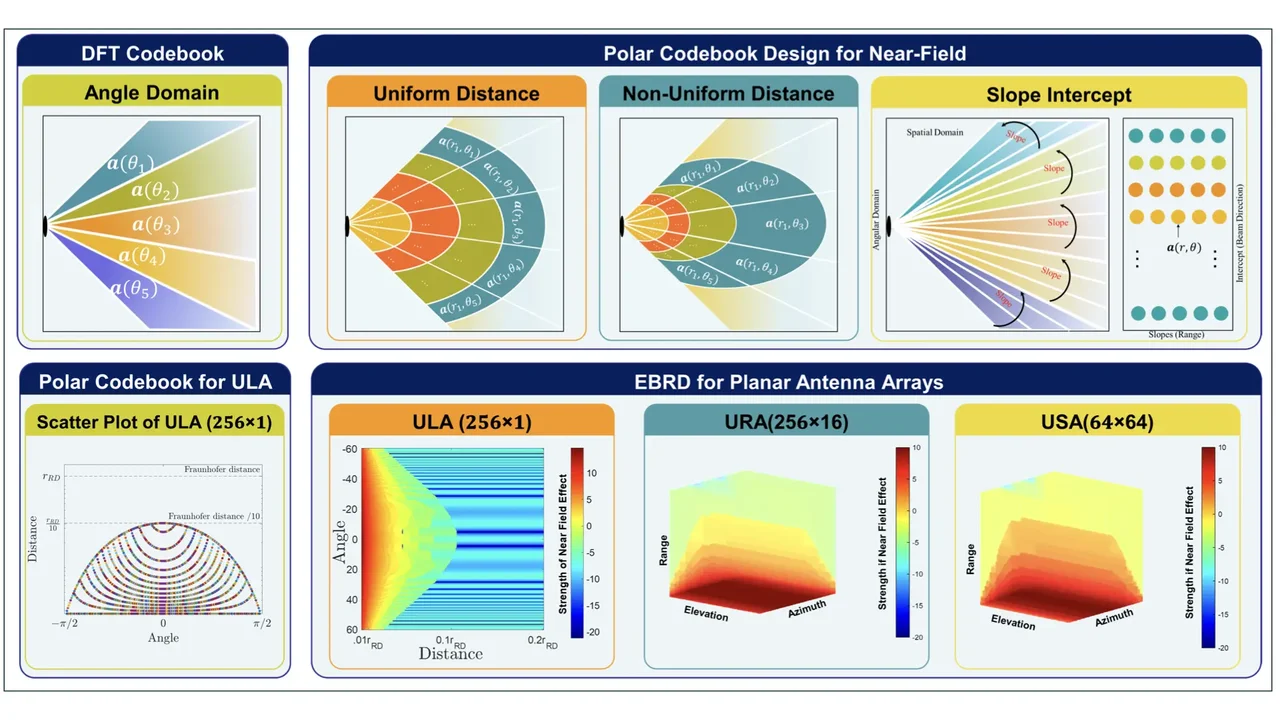
Polar Codebook Design for Near-Field Channel Estimation
Overview
As sixth-generation (6G) wireless networks approach, leveraging the mmWave and THz bands' abundant spectrum becomes crucial, promising ultra-high data rates and enabling immersive communication experiences. This transformation, characterized by the integration of ultra-massive MIMO (UM-MIMO) systems, facilitates significant increases in throughput and capacity by utilizing densely packed antenna arrays. The resulting shift from traditional far-field communication, with its planar wavefronts, to near-field communication (NFC), where spherical wavefronts predominate, necessitates a reevaluation of conventional beamforming and channel estimation methods. Effective codebooks, based on the spherical wavefront phenomenon, are vital for both channel estimation and beamfocusing, providing predefined sets of beam steering vectors or codewords needed to efficiently probe the channel and direct the beams towards desired directions. This project explores the development of polar-domain codebooks tailored for these near-field conditions. We reveal the exact boundaries of NFCs, design polar codebooks based on our sparsity analysis findings, and demonstrate their efficacy in channel estimation and beamfocusing without relying on user range information. These codebooks significantly reduce dimensionality, offering a practical solution to the challenges of minimal pilot overhead.
System Model
This work considers an uplink multi-user MIMO-OFDM communication system in which the base station (BS) is equipped with a uniform linear array (ULA) of NBS antenna elements. The BS employs a fully connected hybrid beamforming architecture to manage this large array efficiently, utilizing a smaller number of radio-frequency (RF) chains, denoted as NRF, where NRF is significantly less than NBS. We assume time-division duplexing (TDD) and a narrowband channel model for simplicity. Within each coherence interval, MUE single-antenna users transmit mutually orthogonal pilot signals. This orthogonality allows the channel estimation process to be carried out independently for each user.
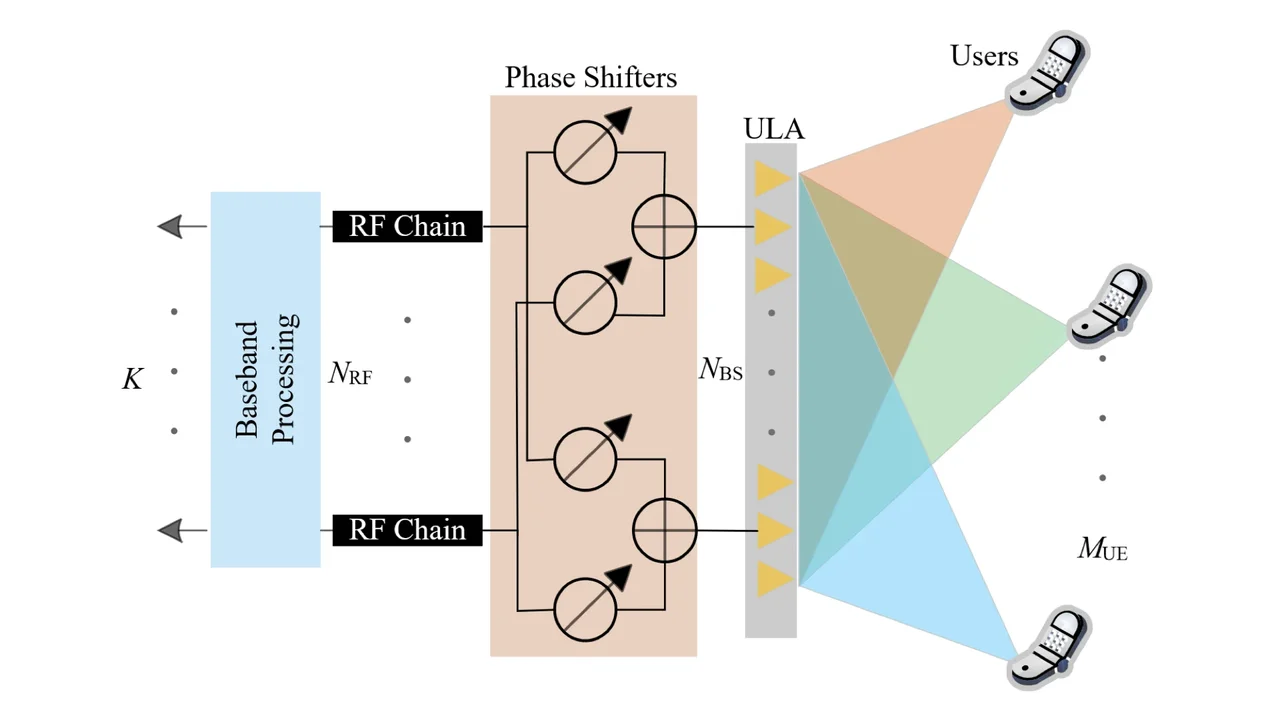
Polar Codebook Design and Channel Estimatio
Near-field channel is sparse in the polar domain. Therefore, near-field channel estimation can be carried out employing compressed sensing algorithms and a polar domain codebook.
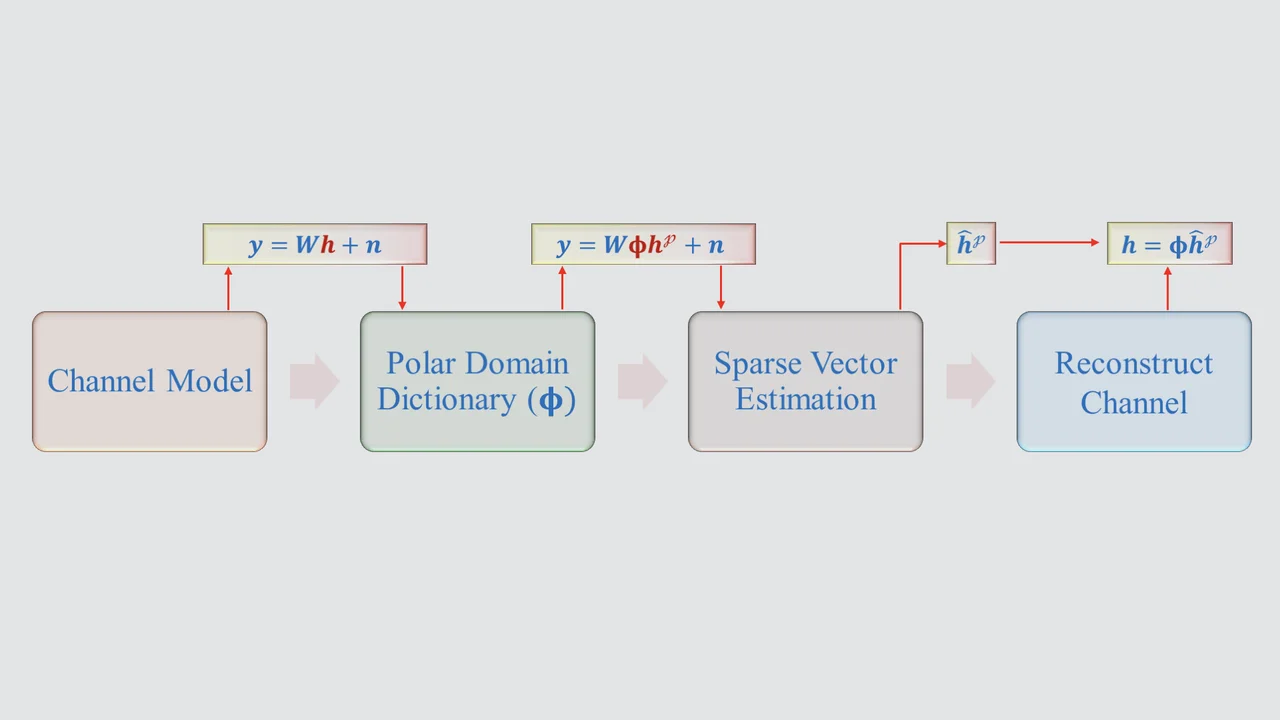
Efficient polar codebook design entails orthogonal codewords that provide full coverage with minimal cardinality. Since polar domain sparsity is confined within the Effective Beamfocused Rayleigh Distance (EBRD) region, we propose redefining the maximum distance sampling limits of existing codebooks based on the EBRD to significantly reduce storage requirements. Furthermore, we propose a beam depth-based distance sampling criterion that ensures low correlation and complete coverage with no blind spots.
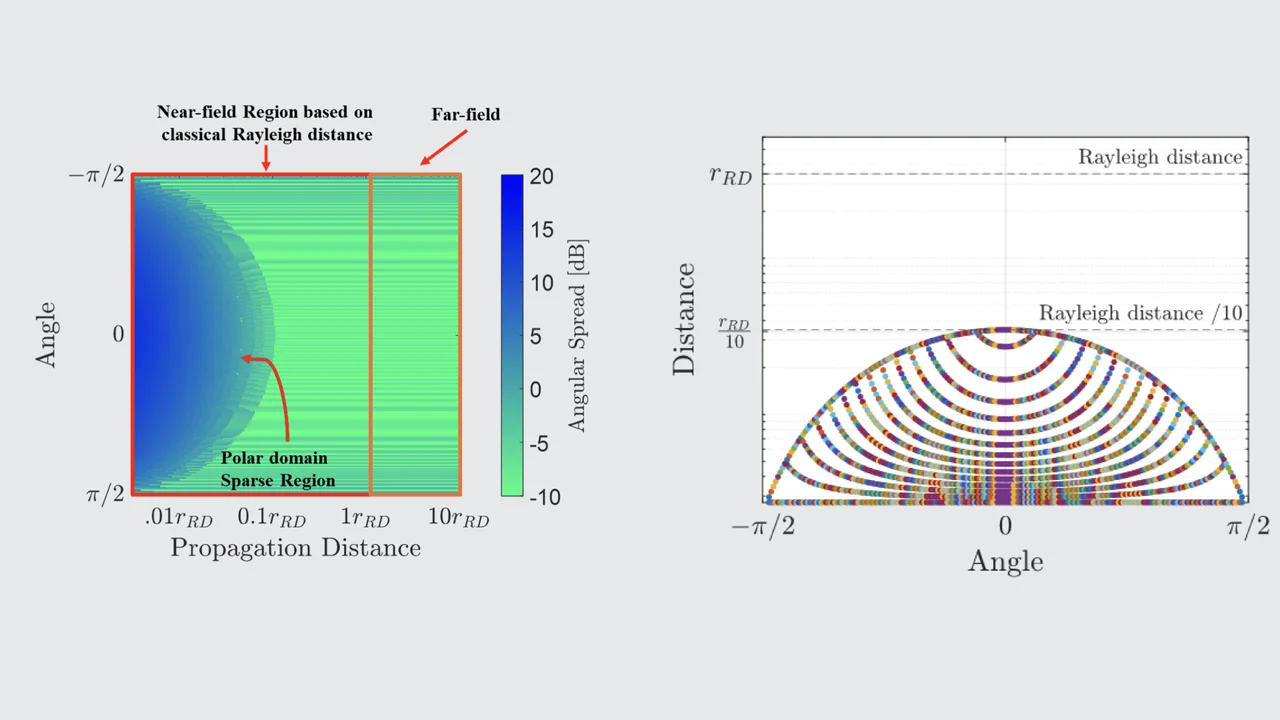
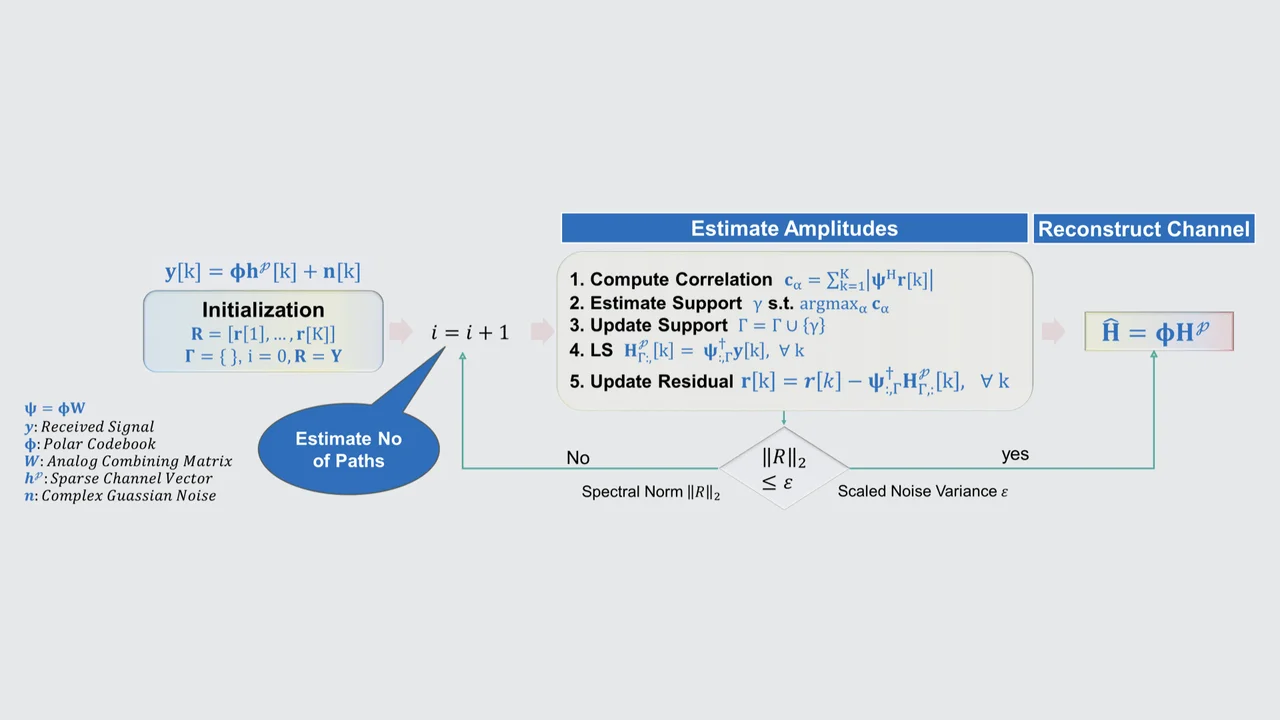
Results
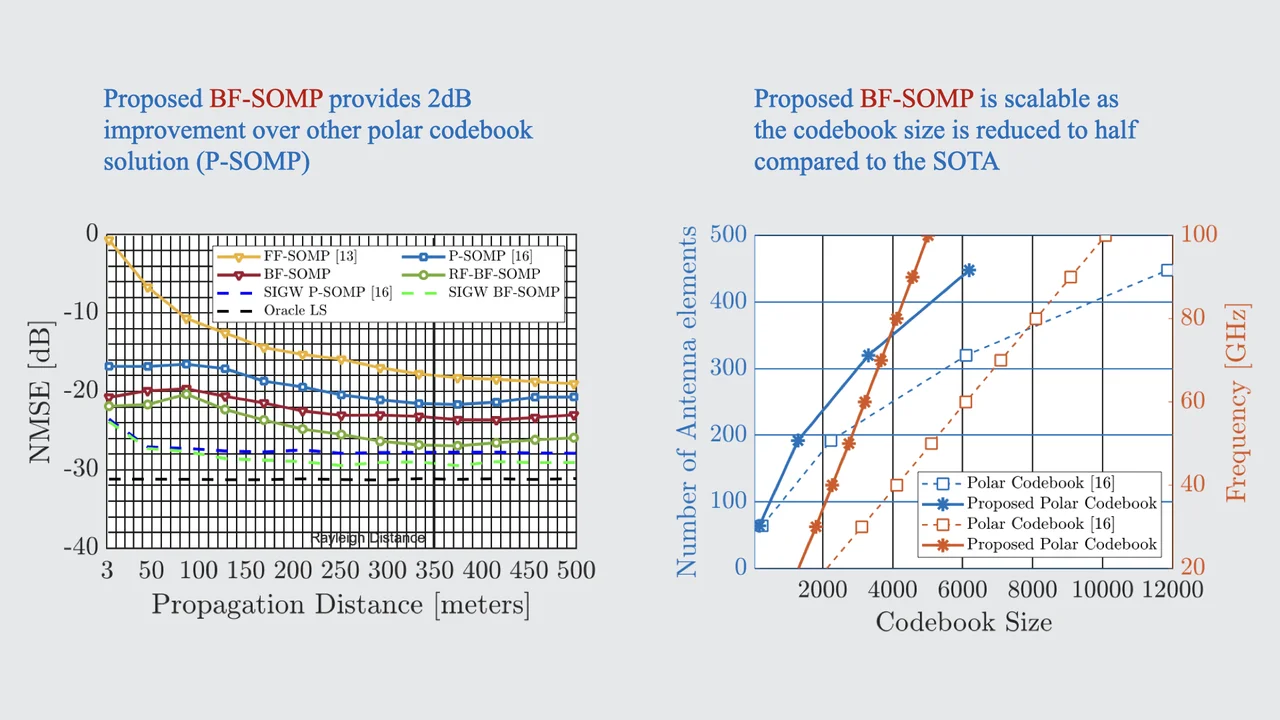
Copyright
The data and results presented in this work are protected by copyright and may only be used with proper citation. Any use of this work should reference the following papers:
- A. Abdallah, A. Hussain, A. Celik and A. M. Eltawil, "Exploring Frontiers of Polar-Domain Codebooks for Near-Field Channel Estimation and Beam Training: A comprehensive analysis, case studies, and implications for 6G," in IEEE Signal Processing Magazine, vol. 42, no. 1, pp. 45-59, Jan. 2025, doi: 10.1109/MSP.2024.3508474.
- A. Hussain, A. Abdallah and A. M. Eltawil, "Near-Field Channel Estimation for Ultra-Massive MIMO Antenna Array with Hybrid Architecture," 2024 IEEE Wireless Communications and Networking Conference (WCNC), Dubai, United Arab Emirates, 2024, pp. 1-6, doi: 10.1109/WCNC57260.2024.10570663.
- A. Hussain, A. Abdallah and A. M. Eltawil, "Redefining Polar Boundaries for Near-Field Channel Estimation for Ultra-Massive MIMO Antenna Array," in IEEE Transactions on Wireless Communications, doi: 10.1109/TWC.2025.3564696.


